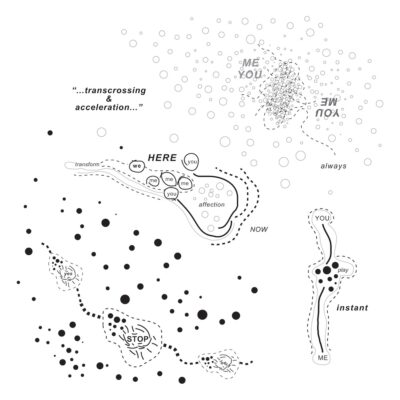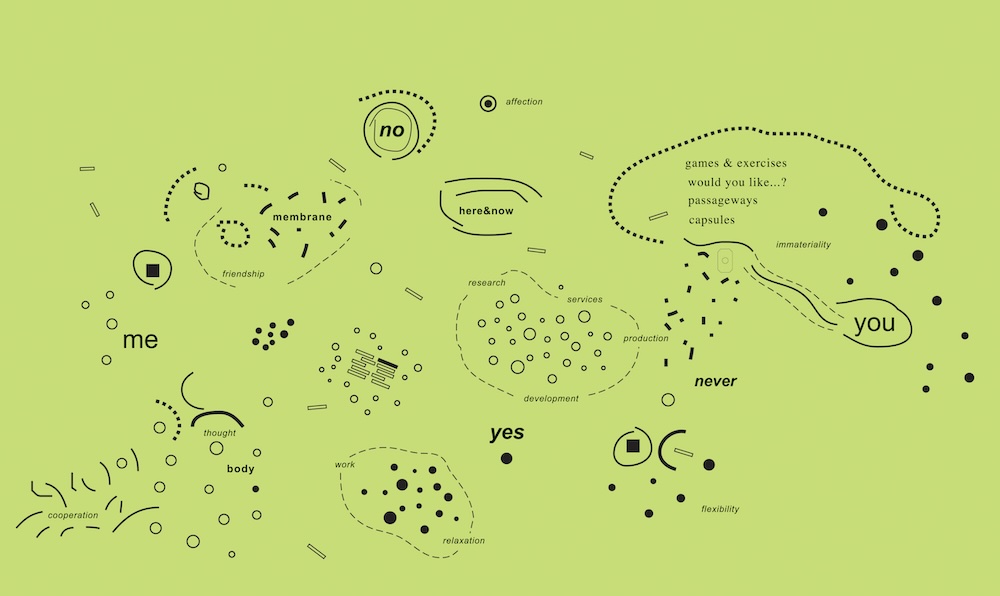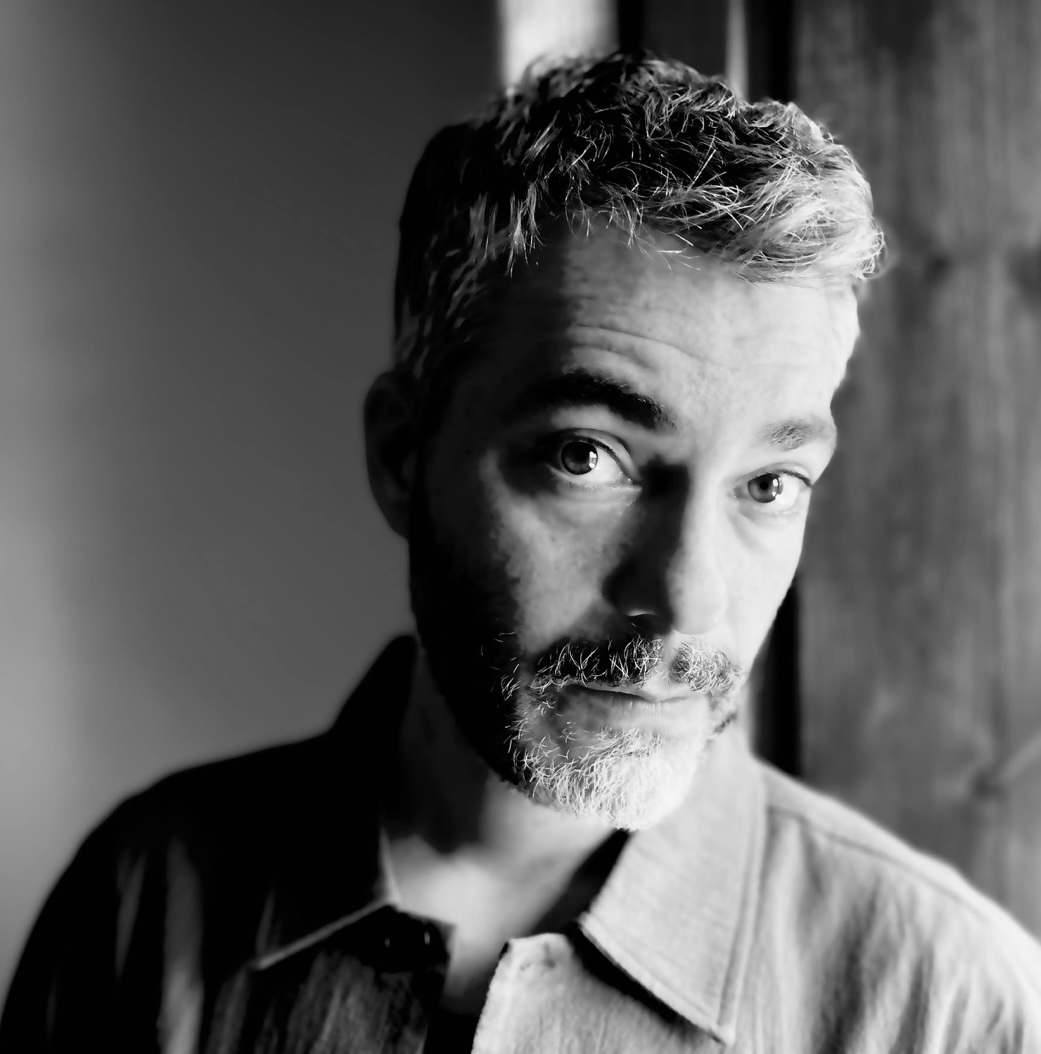Search
To search for an exact match, type the word or phrase you want in quotation marks.
A*DESK has been offering since 2002 contents about criticism and contemporary art. A*DESK has become consolidated thanks to all those who have believed in the project, all those who have followed us, debating, participating and collaborating. Many people have collaborated with A*DESK, and continue to do so. Their efforts, knowledge and belief in the project are what make it grow internationally. At A*DESK we have also generated work for over one hundred professionals in culture, from small collaborations with reviews and classes, to more prolonged and intense collaborations.
At A*DESK we believe in the need for free and universal access to culture and knowledge. We want to carry on being independent, remaining open to more ideas and opinions. If you believe in A*DESK, we need your backing to be able to continue. You can now participate in the project by supporting it. You can choose how much you want to contribute to the project.
You can decide how much you want to bring to the project.

Although identity has taken the form of a question these days, in contemporary art it is often given as an answer. This is so not because identity resolves something external, but because it is already determined from within: it makes visible, denounces, and represents something that is already there and to which the work bears witness. Art, then, becomes a field of emotional validation rather than a space open to the struggle of existence. Recently, an artist friend forwarded me one of the questions she was asked for an institutional interview: “What is the curatorial core of the exhibition?” I repeated the question in other words to see if I could help her. After a while, she sent me an audio recording: “I don’t know. I try not to have a curatorial core.” Heart emoji.
How can we resist the pressure to reduce subjectivity to an interface that must constantly perform its singularity (and which does so in a predefined, standardized, parameterized language)? What can we do when every form of creation seems compelled to be monetized or to live at risk of being canceled? Who enables the categories “art” and “artist” today? What is being discarded when a work enters the repertoire of the visible without any friction? With these questions in mind, I would like to explore some of the difficulties of the current intersection between art, expression, representation, and dissemination in order to try to consider what kind of subjectivity is being produced today in contemporary art, understood not as a field of practice but as a regime of existential design.
The words surrounding the path from disruption to archive seem old and tired, adjusted to agendas and templates. There are also gestures that still persist, which do not fit into the language of open calls or the metrics of the visible very well. These are not heroic gestures, they are not even very clear, and sometimes they are barely noticed or desired. A minimal interruption, an intense detour, a way of not quite fitting in. This is, perhaps, all that remains of the question about art today, that is, less insistence, interpreted as an outdated error or a failure in ultra-targeted communication. So, what is expected of an artist today, not so much in terms of the work but as a form of existence?
One of the paradoxes of the times is that the contemporary art system functions as a device for individuation while simultaneously multiplying its statements in the name of the collective. The figure of the artist as manager of their own identity, as designer of themselves, as producer of visibility, seems to have replaced the old inspired subject, the conceptual worker and the visual activist. What emerges is not a singular subjectivity but a cloak, that is, the artist as an interface, as a relational node optimized to exhibit political sensitivity, situated identity and the constant production of signs. The work itself is no longer as important as the person who produces it, and the person who produces it is not as important as their statement.
In an ironic twist, the insistence on situating each practice ended up over-identifying artists with their site of enunciation. What was initially a gesture of critical openness in the face of universalist abstraction now risks being solidified into a map of closed legitimacies. Only those who live it, those who see it, those who have it, are allowed to speak. In this way, what is situated loses its relational power and becomes a fixed position, locked into an unrepeatable condition. Translation becomes suspect, displacement is read as appropriation, and the result is that an artist’s subjectivity, to be valid, must become increasingly specific, literal, and self-referential. It is enough to call oneself an artist to be one. In addition to democratizing the power to name, however, this often ends up diluting its effects, since each artist is expected to narrate their place, their wound, their difference, their cause, and to do so seamlessly. Hence, artists have become exhausted, stressed, impoverished, and anguished by the weight of a small artworld category rather than by the weight of the world.

Ricardo Basbaum. diagram [la société du spectacle (&NBP)], variable dimensions variables. Fundación ARCO Collection. Courtesy of the artist
Although it constantly permeates it, this logic is not exclusive to the art world, it is part of a broader political economy in which desire is conceived as a self-evident factor that can’t fail. Desire must be actualized, realized, and revealed. Delay, detours, opacity, and, above all, metaphor lose value. What matters is listening, speaking, and producing as a shareable experience. What is of value is not the question but the origin, not the imagination but the experience. A narrative that guarantees intelligibility is required. The paradox, however, is that the more literal this inscription becomes, the more the power to collectivize suffering is lost. Art is produced under surveillance, as if each work were obliged to anticipate its reception. With this normalization of gesture, the possibility itself of saying something we didn’t know could be said quietly vanishes.
In this way, each artist becomes a kind of emotional micro-platform, a system of sensorial self-exploitation that produces work, narratives, pedagogy, archive, and community simultaneously. It is no coincidence that many studios have been replaced by residencies and the process by the recording. An extended time of contemplation gives way to the urgency of producing something that can circulate. Part of the artist’s work today is to become a professional of visibility. Artists are required (sometimes obviously, but generally in subtle and pervasive ways) to create, but at the same time to explain, represent, situate themselves, and, if possible, also intervene concretely in the contradictions of the world. The self becomes artwork, functioning in an economy that rewards the singular but consumes it at ungraspable speeds, one which demands difference, based on hype, but demands its constant translation.
This is all happening in a context in which great narratives have been shelved (with all the benefits and drawbacks that this entails), leaving a conceptual void (with scant desire for theory) and leading to a state of affairs in which structures of meaning seem to be negotiated in real time. The art market no longer needs just big names, but must also be driven by constant flows. Even cultural institutions seem to operate under programming vectors that allow them to remain in circulation. Not everything, however, is immediate and urgent. If we believe that there exists (or continues to exist) a dimension of the senses that cannot be completely captured by financial capital or partisan politicians, we could perhaps increase attention to an area that, without any need to be sacralized, sometimes resembles a movement that is difficult to pin down.
This isn’t about nostalgia for a lost bohemia (quite the opposite), but rather a sign that the artistic subjectivity of the present lives under the regime of total design. The persistence of the question, more than a heroic gesture, is a form of active inadequacy. It is not an interruption from outside, but rather interference, dissonance, minor discomfort. There is no outside but there are ways of inhabiting the inside. One of them is to use the mismatch between action and meaning as a method. Perhaps it is there that we can seek a kind of affirmation that is neither salvation, refuge nor guarantee, that is, a minimal suspension, a form of presence that doesn’t ask to be interpreted but doesn’t allow itself to be ignored either.
One of the challenges to consider is how to restore to artistic practices the possibility of betraying what is taken for granted. To translate poorly, in a strange or deformed way, in order to force the emergence of what we have in common. Perhaps it’s about sustaining murky zones amid hyper-legibility, in which case the quest isn’t to point to a guaranteed meaning but rather to the structural precariousness that defines our material conditions. If there’s one thing the current art world produces efficiently it’s subjective isolation. Faced with this reality, we must imagine new forms of organization (unstable collectives, uneasy alliances) beyond the juxtaposition of voices and towards the construction of spaces where causes can converge. Is it possible to do this using the same platforms that shape us? Is there still room to render certain chains of meaning inefficient? This remains to be seen. However, if it’s not true that digital technologies are condemned to reproduce the neoliberal order, even if they are currently blocked in favor of that regime, perhaps we must copy the gestures of their owners and produce tools whose purpose is unknown.
Finally, in the context of the surveillance of meaning, the autonomy of artistic labor is at stake. Being an artist is not something abstract, much less today, outside of the production and reproduction of life. If artistically situated subjectivity becomes a site of labor in itself, it should also be labor for oneself and for others. It would be useful to rethink artistic labor as a collection of knowledge and an attempt to overcome the divisions between the legal and the marginal. If labor today is the exploitation of being and attention, then redefining it in collective and intermittent modes can be an effective gesture for assembling disparate subjectivities into coordinated praxis.
Current cultural entropy translates everything without friction, it is the empire of un-imagination. To confront this, artistic practice could function as a partial, fragmentary, unbalanced montage, a counterpoint capable of accommodating tensions without resolving them, small devices of disorder that do not replace one hierarchy with another. Faced with the imperative of the literal, we must restore mediation, detours, imprecision, delays, the path that comes after immediate experience. In the midst of collapse, when all language seems exhausted and all visions of the future shrink to the point of survival, using our imagination is a political necessity. It is about thinking without knowing why, but knowing that without that thought, there is no other possible world. It is a more strident form of thinking, much like noise.
[Featured Image: Ricardo Basbaum. diagram (me-you series), 2002. Variable dimensions. Commissioned by the museum in progress, Vienna, for the “urban tension” project. Courtesy of the artist].

Hernán Borisonik holds a PhD in Social Sciences from the University of Buenos Aires and is a researcher at Conicet (National Council of Experts). He is an adjunct professor at the School of Humanities at the National University of San Martín, where he directs the Center for Science and Thought. He coordinates various projects in philosophy and political theory that explore issues related to money, sacredness, politics, and the arts. He occasionally curates, performs, and art criticism. He won second place in the Argentine National Prize for Philosophical Essays in 2020. He has edited several academic and popular volumes and published the books “Dinero Sagrado” [Sacred Money], “Soporte” [Support], and “Persistencia de la pregunta por el arte” [Persistence of the Question of Art], among others.
"A desk is a dangerous place from which to watch the world" (John Le Carré)